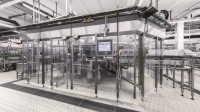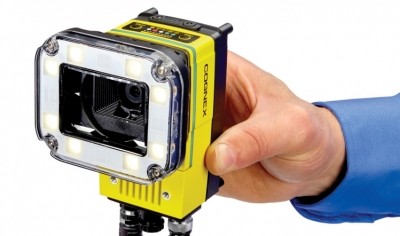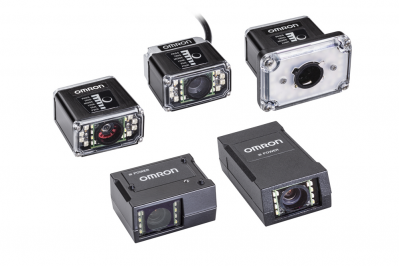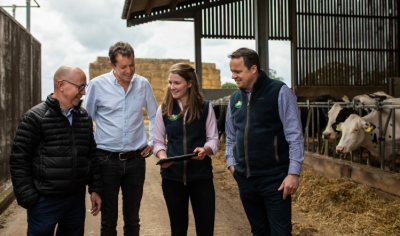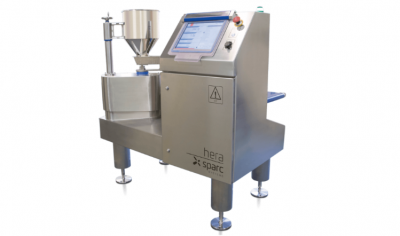Packaging machinery
Big data starts small: visualising the future of smart factories
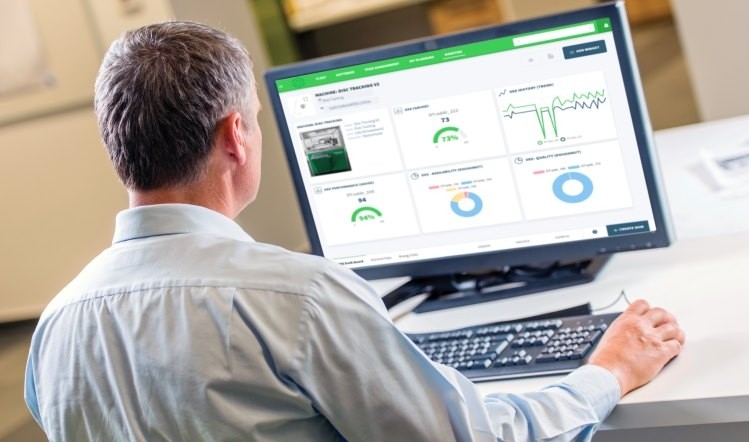
Over recent years, our collective senses have been dulled by constant references in manufacturing circles to Industry 4.0, the Industrial Internet of Things (IIoT) and Big Data. It can be is easy to forget that the IIoT begins with, well, individual industrial things, and even Big Data has to start small.
This is certainly no truer than with packaging and filling equipment, where suppliers believe it can be more helpful for those operational food manufacturers working with legacy equipment to think about their current capabilities – and build upwards from there.
“With all the talk of intelligent factories and connected supply chains, as a company, we have found it is much more effective to go into detail,” says Martin Walder, vice president industry for UK and Ireland at Schneider Electric.
At this detailed level, smart sensors can make specific and tangible differences to machine and line efficiencies – either on existing equipment or as a part of a fresh investment – to open up bottlenecks or new manufacturing possibilities.
“It’s about integrating levels of connectivity and AI [artificial intelligence],” says Dan Rossek, regional marketing manager at Omron Industrial Automation Europe. “This means we can capture additional data from the sensor – data that we would not normally be able to obtain from a traditional, binary sensor.”
The definition of a smart sensor can apply to different types of optical sensors all the way up to camera-based vision systems, pressure sensors, temperature sensors, or simply to the ‘sensing’ of current and resistance.
Higher level management
Starting at the apparently straightforward level of an optical sensor, designed to detect the presence of a carton or other pack or component, the binary nature of its conventional function is clear. “In a food environment especially, that sensor may become contaminated and, in standard mode, there will be no diagnosis of this,” says Rossek. “On the other hand, a smart device can give you higher-level management.”
As the smart sensor becomes obscured, it is able to communicate degrees of light rather than a simple on/off function. “If you can capture that level of information and pick it up in a control system, then it has a predictive role,” he says. “The goal is not simply to be ‘smart’ but to prevent costly downtime.”
The control system offers another level of intelligence in its ability not just to collect data but correlate it. For example, one manufacturer of premium cookies is using a laser-based optical sensor to help collate stacks of four biscuits for loading into a tray, says Schneider Electric.
“The product is very irregular, and can vary considerably in height,” explains Walder, adding that if the stack is too high, it will not fit inside the pack. “The sensor measures the height of each cookie on the fly as it exits the oven.”
Subsequently, a pick-and-place robot, equipped with its own vision system, forms each stack. “The robot is instructed to pick up the right combination of product, with the vision system doing the job of locating the cookies,” he says. “It’s all about data from the two different sensors being brought together on the same controller – and it all happens very fast. Only a few years ago, a manufacturer wouldn’t have been able to do it.”
Smart sensing can also provide a much more precise picture of what is actually happening on the packaging line than conventional machine settings. Omron has been helping to integrate temperature sensors for manufacturers of equipment previously used to form, fill and seal all-plastics packaging, with the latter increasingly replaced by combinations of polymer and paper.
“One of the challenges is the trend away from plastics, but these materials are actually easy to work with,” says Rossek. For areas such as thermoforming and heat-sealing, the drive to reduce the amount of material being used is a further challenge, he adds.
“In the past, temperature control heat-sealing of +/-10˚C used to be acceptable,” he says. “But now, to meet the needs of thinner materials in particular, control has to be to within +/-1˚C.”
AI algorithm
Omron’s new system integrates an AI algorithm into the temperature control. As Rossek notes, a large amount of ‘noise’ is generated in the production environment, and this algorithm allows machine operators to eliminate this interference in order to measure and regulate real temperatures at the point of contact.
Communication speeds mean intelligent sensors can also be used to capture and validate critical parameters for each pack, even on high-volume lines. For its aseptic filling lines, Italian firm GEA Procomac integrates pressure sensors – branded as Smart Sensors – to validate, for each bottle, the wet sterilisation and rinsing steps that precede filling.
“There is a single nozzle for each of the sterilisation and rinsing functions, so obviously, if one of these fails, we have a problem,” says Luigi Baiocchi, deputy sales director at GEA Procoma. “The sensor detects whether the nozzle is working – and working properly.” The force of the jet is tested immediately before each bottle sterilisation and compared with benchmark values.
The system features on GEA Procomac lines using hydrogen peroxide as the sterilising medium, such as the ABF 1.2 and Whitebloc, as well as lines using peracetic acid.
These days, connectivity for the various types of smart sensors typically comes courtesy of an IO-Link, which is a common standard and open protocol. Years ago, as Omron explains, many vendors had their own protocols, which were not always compatible. Along with IO-Link, other open protocols such as EtherCAT and EtherNet/IP give additional levels of connectivity.
“You don’t want multiple separate monitoring outputs, so data would normally go to a single human-machine interface for each machine,” adds Rossek. “If required, it can then be escalated to a supervisory control and data acquisition [SCADA] package.”
A point worth emphasising is that the control system, not the sensor itself, determines the levels of ‘smartness’. The sensor may be the ‘eye’, but the intelligence that interprets what that eye registers is located elsewhere. “That’s why it’s not so straightforward to retrofit this kind of capability into [an installed] machine,” says Rossek. “You need to interface it with – and adjust – your control system, too. It’s not a matter of ‘plug and play’.”
“In the UK and the rest of western Europe, most of the factories we deal with are adapting or modifying existing sites,” adds Walder at Schneider Electric. “Not everyone wants to go back to the controller and modify it. We have a family of small IIoT boxes, which allow manufacturers to send data, including data from sensors, to the cloud. There, it can be integrated with other data
from controllers.”
Monitoring in the field
Also at cloud level, Schneider Electric offers its Machine Advisor platform for original equipment manufacturers (OEMs) that are monitoring the performance of their own machines in the field.
As Walder explains, machine controllers themselves can act as ‘smart sensors’, in terms of monitoring performance and offering predictive diagnostics. “Where servo motors are working from a motion controller, each drive module can monitor current,” he says.
“If something is dragging, current requirements will increase. If you measure current along with cycle times, the data on the controller will give you enough information, and you’ll get a pretty good idea of what’s going on.”
More sophisticated and complex ways of monitoring motor performance do exist. “Working in particular with the automotive sector, we’ve developed condition-monitoring sensors for motors,” says Omron’s Rossek. “This allows the monitoring, for example, of dielectric rating, current, vibration and temperature, using smart devices.”
This arrangement allows the option to set values on each device, which trigger an alarm output. It makes most sense where there is a fair amount of equipment running from a single drive, more typically with an AC induction motor, he says, rather than with multi-axis servo, where it would not be so effective.
“We’ve tended to take this kind of approach with motors on equipment such as large compressors or generators where the pump failing will have a major impact,” says Walder at Schneider Electric. For multiple servo motors in a packaging machine, this level of monitoring would not really be required, he suggests.
Undervalued by OEMs
In other applications, smart sensing certainly is effective in a packaging setting – but there can still be a tendency for OEMs to undervalue its benefits. Rossek believes it is not uncommon for end-users to want the functionality that comes with smart sensing, but for equipment suppliers to be reluctant to provide it.
“For the manufacturer, it does add cost to the machine build,” he acknowledges. “But some OEMs can be a bit short-sighted in this regard. They could sell the capabilities that come with smart sensors and include them as an additional cost.
“You’re selling improved uptime, immediate location of where a problem lies – benefits that would otherwise depend on the experience of individual operators. If you’re developing a new machine, implementing these technologies and building in this level of functionality is extremely cost-effective,” he claims.
Some of the less tangible benefits for a machinery company are to do with customer loyalty. “As soon as you can aggregate data and compare similar machines, you can help each customer, advising on best-in-class and on how they can up their own performance,” says Walder.
Of course, there are also clear benefits for manufacturers, who can probably appreciate these best by reminding themselves of the realities of life without this level of machine intelligence, he argues.
“When performance is not being monitored, you can have no idea that your line is running at just 70% overall equipment effectiveness, for example,” Walder points out. “Every time there’s a failure, you’re likely to be down for an hour or so. If no one is aggregating the data, you’re never going to be able to drill down to the root cause. Without the sensing and the recording, you’ve got nowhere to start. But if you know what’s happening, that’s the beginning of the journey.”
Making sense of filling pressures
For filling beer, cider and carbonated soft drinks into glass, equipment company KHS is now offering the option of including its pressure sensor-based Dias diagnostics and assistance system for individual nozzles on its Innofill Glass DRS filler, as well as on other systems.
The patented Dias technology monitors the pressure curve, switching times and step sequences, enabling manufacturers to optimise all settings, says KHS. It can also act as a predictive maintenance tool, detecting deviations from target settings as a result of wear and tear, for example, long before they become a serious issue.
“Dias enables a complete function check of the valve for every single bottle,” says Manfred Härtel, product manager for filling technology. “Malfunctions and errors are detected and displayed on the human-machine interface.”
The line may still need to be shut down temporarily to fix a specific problem, says KHS, but the system avoids the much longer type of troubleshooting process, where a problem needs to be located and diagnosed before it can be addressed. Networking is via IO-Link.
“Dias is already included in some of our other machines,” says Härtel. “We see great potential in future for using it on all our filling systems.”
For higher-level diagnosis and process optimisation, Dias data on filling sequences can also be accessed via KHS’ Redis remote diagnosis system, allowing the statistical assessment of multiple machine functions and settings.
Like Dias, KHS regards its Opticam dual-camera system as a quality-assurance option, particularly with a sensitive product such as beer. “The two cameras evaluate the quality of the targeted bottle frothing and closing process,” says Härtel. The aim for a brewery in particular, would be to ensure consistently low levels of oxygen pickup.
The camera system will monitor foaming independently of the operator, optimising pressure in the foaming jet to minimise residual oxygen, and stopping production if there is a recurrent fault.
